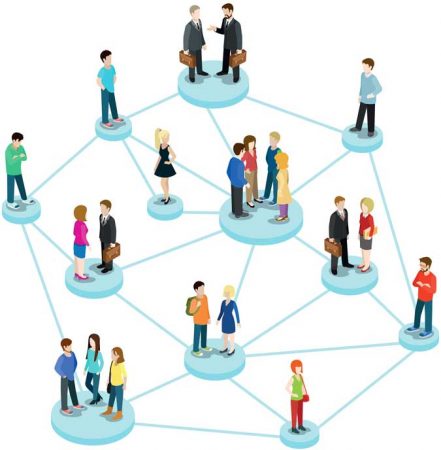
What’s in it for me? This — more often than not — is a question we frequently ask before we get involved in any project or even join an organization. This is not a judgment. In fact, I think it is understandable for people to sometimes make decisions based on what we may or may not gain from any undertaking.
Many individuals view networking as such. Truth be told, many people do not like it, while others enjoy it and even thrive on it. But wherever you stand on the concept of networking, I think we can all agree that networking has evolved to be a fundamental individual and business strategy.
While reflecting on MAP’s 2020 battlecry of “LEAD for a Competitive Tomorrow,” this brought me to the realization that now more than ever, it is important to strengthen networks to create support systems for those affected most by the pandemic — and I believe it to be women in this case. As business leaders, we have the responsibility to ensure that our businesses — and these include MSMEs — will be able to not just survive, but thrive in our new “competitive tomorrow.”
On Nov. 9, I had the privilege of speaking at the ASEAN Women CEOs Summit. I joined other women business leaders from Southeast Asian countries who shared important insights about the benefits of networks in the ASEAN.
As a person who meticulously ensures that nothing falls through the cracks (and those I work with can attest to this), I shared my own list — a list of “Cs” — of how networks can support women entrepreneurs in the region. In the same vein, I also took the opportunity to emphasize that networks should be supported, not just by the private sector, but governments, institutions, and other stakeholders. Allow me to share you this list:
1. Clarity of goals and objectives. Setting what the network hopes to achieve should be clear at the outset to the potential members. In the case of women entrepreneurship networks in particular, this is the point where we ask: What is the goal? Is it just networking to meet contemporaries in the same field? Will the network be about partnerships and collaborations? Will the network seek to provide access to markets, to finance? Will it be about skills and capacity building? These have to be clear from the start.
2. Comprehensive and Inclusive. Time and again, we must ensure that no one must be left behind. And when applying this to women entrepreneurship networks, these are the things to consider as well: Should it include women in the workplace and in the marketplace? How about those in Micro, Small, and Medium enterprises? How about the more vulnerable sectors such as marginalized women, women in the rural areas, and women in the informal economy? Leaders of these networks should always bear in mind that not everyone has the same situation, access, and resources at hand.
3. Common interest. The vision for the network as well as the decisions made should always be based on what is beneficial to, and in the best interest of, the members. All actions and results should transcend both collective and individual interests.
4. Communication and Interaction. As in any organization or situation, there should always be open and constant communication within the network so that all concerned will be informed. Given the technologically advanced and creative platforms we have available, there are many effective ways to communicate and stay connected: virtual meetings, social media, and live broadcasts, as well as the traditional route of regular newsletters or bulletins. Networks should find inclusive ways to communicate and interact with members.
5. Commitment. A true mark of success is very much anchored on the long term view. It is vital that members or participants of our networks are here for good and for the long run. Having their commitment to grow in and with the organization will be the bloodline of the network.
In the course of the discussion with the remarkable women from my panel, one panelist contributed another “C” and a very important one at that:
6. Connect. This goes to the very heart of networks and their ability to provide members the access and privilege to be connected to people, opportunities, mentorship, and knowledge. Networks must be able to connect people to one another, especially during this “age of social distancing.” It is the way networks connect us to one another that also keep all of us tethered to the real world.
I cannot overemphasize the importance of being part of a network, especially during these difficult times when working together is of much importance. When we say “Your network is your net worth,” this speaks volumes of what one can gain by being part of a network. This includes the unique advantage of access to the wealth of mentors, advisors, and lessons from experienced and knowledgeable professionals, as well as access to growth and business opportunities. Furthermore, from networks you can achieve growth in many areas and gain new perspectives and expand perceptions, especially in business.
The lessons, benefits, and possibilities are limitless. One day, we will look back at this time and realize that networks paved the way for the business sector’s continued growth and ultimately kept the world running.
This article reflects the personal opinion of the author and does not reflect the official stand of the Management Association of the Philippines or the MAP.
Ma. Aurora “Boots” Geotina-Garcia is President of Mageo Consulting, Inc., which provides corporate finance advisory services. She is a member of the MAP Shared Prosperity Committee and MAP Corporate Governance Committee. She is the Chair of the Philippine Women’s Economic Network (PhilWEN) and Co-Chair of the Philippine Business Coalition for Women Empowerment (PBCWE).

